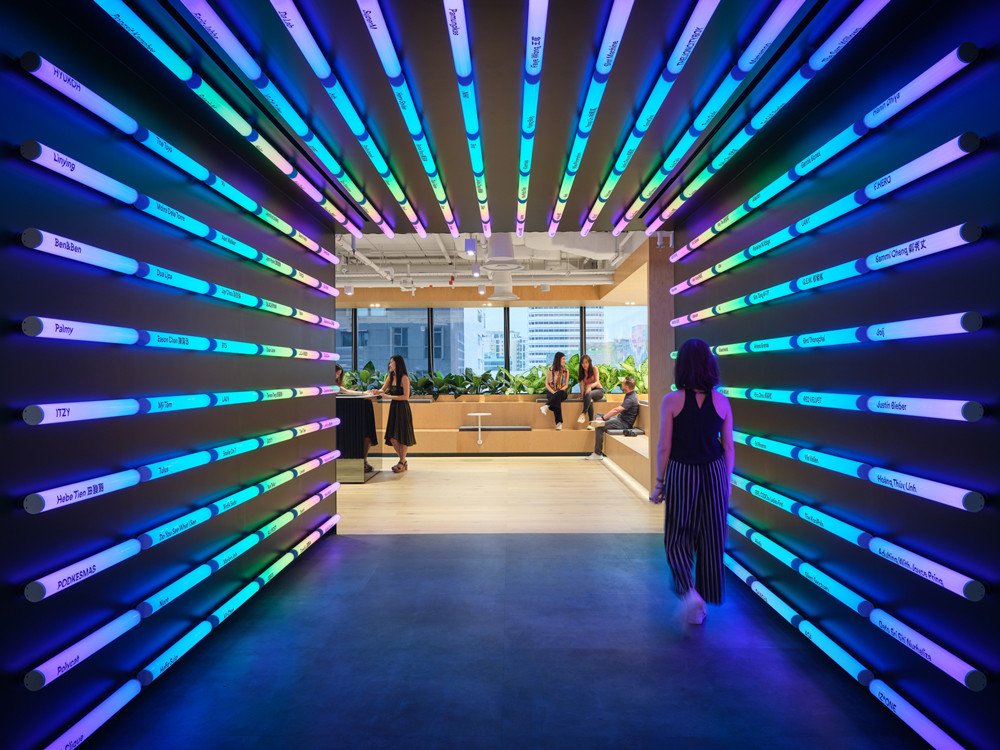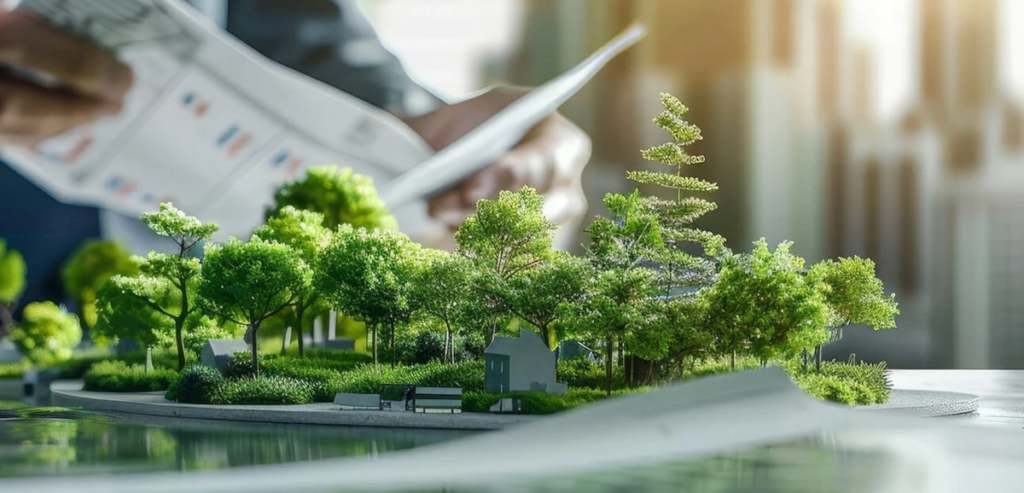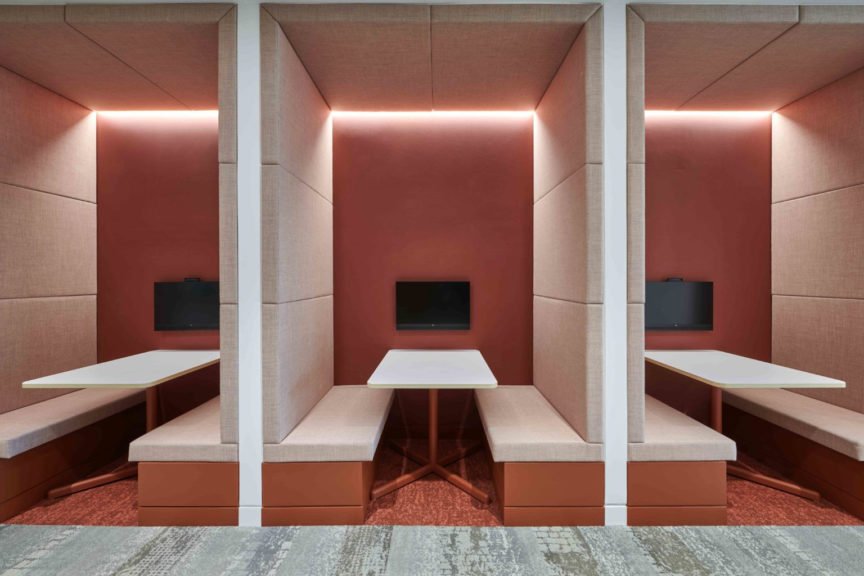The conversation around blue light exposure and how it could negatively impact health has been gaining traction. When creating a space as a designer, would it be wise to limit blue light exposure? Is it really harmful? Explore what blue light exposure truly means with Love That Design and make informed design choices.
You’ve stepped out for a walk on a bright sunny day, thinking about your next design idea or simply taking a break from the last one. You look up at the sky. What colour is it? Most of the time, we see the sky as blue. And that’s because blue light scatters more than others and travels in shorter, smaller waves. Our eyes are also more sensitive to blue light. Thanks to the scientist Rayleigh, we know a bit of science. Blue light is all around us.
Interestingly, military forces worldwide once used blue light as an archaic pyrotechnic signal during the eighteenth and nineteenth centuries. However, as the sands of time unfurled, blue light’s narrative evolved, and digital devices proliferated, contemporary concerns began to rise. But does blue light truly pose a threat?

Image Courtesy: Healthy Sights
What Is Blue Light?
Blue light is visible light that falls within the spectrum of 380 to 500 nanometers (nm). It has the shortest wavelength. While it is generally perceived to be blue in colour, white lights or other light colours may also contain blue light. Blue light is often discussed as it contains more energy per photon of light than other colours perceivable to the human eye (VIBGYOR) and could have the potential to cause more damage.
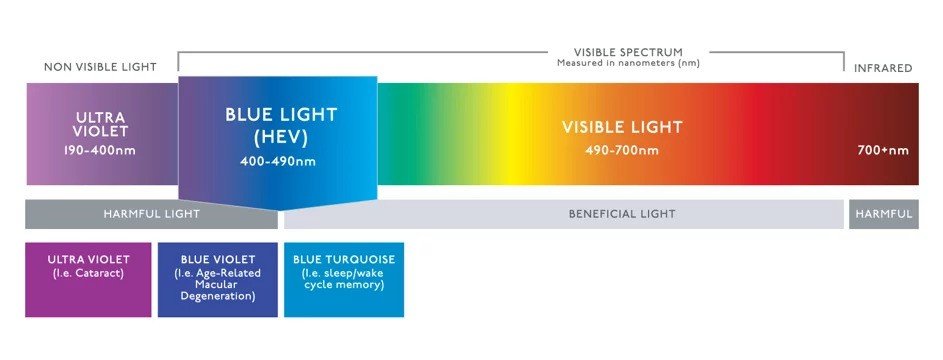
Image Courtesy: BenQ
The Sources of Blue Light
Amidst all the buzz about blue light exposure, it is a must to recognise that the primary natural source of blue light is the Sun, which dwarfs the emissions from digital devices in intensity. For example, while an e-reader may emit around 500 lumens of blue light, even on a cloudy day, exposure to the Sun can inundate us with over 10,000 lumens of blue light.
Moreover, various artificial light sources contribute to our exposure to blue light beyond digital screens and sunlight. LED lighting, commonly used in indoor environments, emits significant blue light. This is particularly relevant in modern lighting design, where colour temperature and spectral composition are carefully considered to achieve the desired ambience and visual effects.
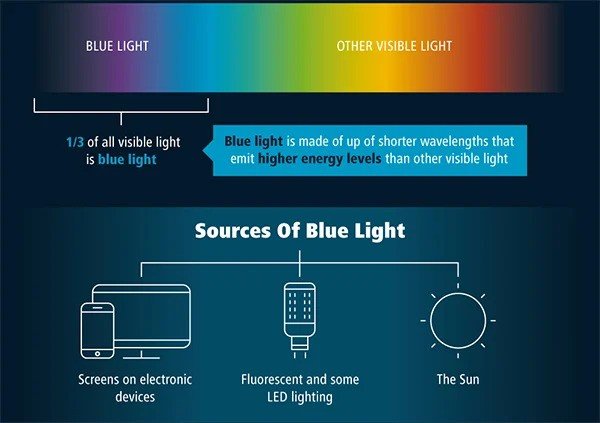
Image Courtesy: Medi-Share
How Blue Light Is Perceived To Be Harmful
Eye health and sleep are the two major concerns about blue light. While all kinds of light can suppress melatonin production and increase the product of stress-inducing cortisol, which affects the sleep cycle, blue light can do that more powerfully. Research has also found that blue light can cause retinal photochemical damage, as well as nearsightedness and poor vision in children.
Age-related macular degeneration caused by blue light has been a raging topic for debate. Eye strain, dry eyes, blurry vision, etc., have also been discussed. Some sources also mention an increased risk for certain cancers. Light-related disturbance, especially at night, can cause mood disorders and metabolic disruption, but this is not specific to blue light; it could be exposure to general lights. Blue light exposure is considered to be particularly harmful for kids, as their eyes filter it less effectively than those of adults.
Image Courtesy: Dr. Lam Coaching
The Flipside: Blue Light Is Green Lit
Not all blue light is bad. In 2014, three scientists were awarded the Nobel Prize in Physics for inventing a blue-light emitting diode (LED) that revolutionised lighting technology worldwide. While red and green LEDs have been around for a while, it is only through the invention of blue LEDs that we can use white LED lamps for wide-scale practical purposes today. The first experiment of generating a blue light LED was done in the 1960s and 70s but it was not sustainable. The 2014 invention led to energy savings, better longevity, and higher versatility, all thanks to blue-light.
While that was on the macro level, on the micro level, blue light exposure can boost alertness, elevate mood and help brain function. Additionally, it helps regulate the body’s natural circadian rhythm.
Furthermore, blue light’s therapeutic potential has been harnessed in medical settings, such as blue light phototherapy for skin conditions like acne and the management of Seasonal Affective Disorder (SAD) through light therapy.
There isn’t enough evidence to support that blue light exposure from devices poses a serious risk as widely believed.

2014 Nobel Prize in Physics Laureates: Isamu Akasaki, Hiroshi Amano and Shuji Nakamura
Let There Be Light
Whether we cause harm to health through blue light exposure depends on the intensity of exposure. Current research, which has been largely conducted on rodents in vitro, may not support the popular myth that blue light is harmful.
While using blue light to craft design narratives, one can consider ambient lighting with a hint of blue light that can carry its benefits and shed the disadvantages. Integrating blue light through natural elements like water or natural lighting in biophilic design can also be inspiring. It could be used for accent lighting with dynamic access control that could be adapted to the time of day.
As we acknowledge the myriad sources and roles of blue light, it is wise to strike a balance between leveraging its benefits, such as enhanced mood and productivity, and implementing strategies to mitigate potential risks, such as using blue light filters on digital devices or adopting appropriate lighting practices in indoor environments. This approach ensures that we harness the advantages of blue light while safeguarding our health and well-being in an increasingly illuminated world.
Article info
Article:
Date added:
26 March, 2024

